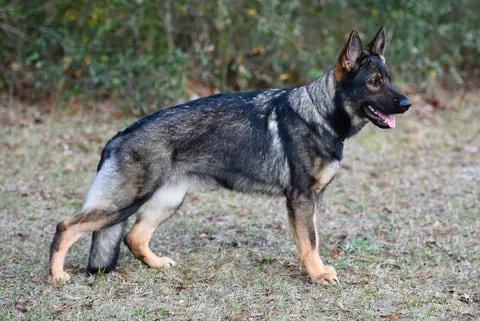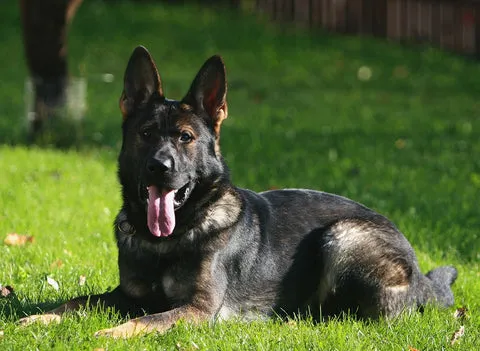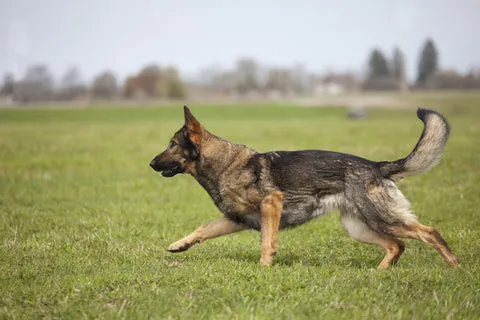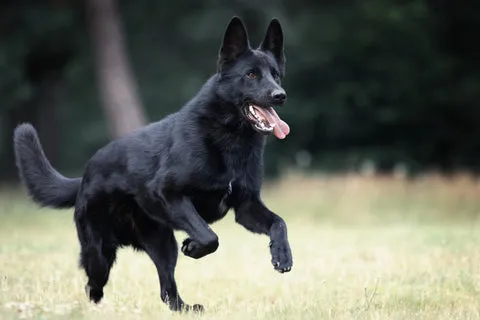The German Shepherd Dog stands as one of the world’s most recognizable and respected breeds, consistently ranking among the top choices for dog owners globally. Originating in Germany in 1899, these remarkable canines were initially bred for herding and guarding sheep, a foundational purpose that instilled in them the intelligence, strength, and athletic prowess for which they are renowned today. For those specifically seeking a dog with robust working capabilities, the Black And Tan Working Line German Shepherd represents a pinnacle of the breed’s functional design and temperament. This distinctive coloration, though often associated with show lines, is also present in working lines, highlighting the importance of understanding the lineage beyond just appearance.
German Shepherds are naturally intelligent and eager to please, making them notably trainable. They thrive on an active lifestyle, excelling in both professional working environments and dynamic family homes. Their exceptional abilities are frequently showcased in law enforcement and military roles, where they perform critical tasks such as protection, detection of drugs and explosives, search and rescue operations, and as dedicated service dogs. Beyond their official duties, these dogs revel in various forms of training, obedience competitions, dog sports, and quality time spent with their human companions. Their abundant energy means they love to play, run, hike, and take on “jobs” around the house, all while providing unwavering protection to their families. To understand the full spectrum of these incredible dogs, it’s beneficial to explore various GSD types, including pictures of different types of german shepherds.
The German Shepherd has also been historically known as the Alsatian. During World War I, the breed’s name was temporarily changed to Alsatian, a reference to the German-French border region of Alsace-Lorraine. It wasn’t until 1977 that dedicated breeders successfully campaigned to restore the breed’s original name, the German Shepherd Dog.
Today, the breed has evolved into two primary distinctions: the working line and the show line. While all German Shepherds share a common ancestral German line, years of selective breeding have led to dogs with distinct differences in appearance, temperament, and health profiles. Focusing on the working line provides insight into the traits that define a truly functional and purpose-driven canine.
Working Line vs. Show Line German Shepherds
The fundamental difference between these two lines lies in their breeding objectives. Working lines prioritize innate working ability, health, and temperament suitable for demanding tasks, while show lines often emphasize conformity to specific appearance standards.
Physical Appearance
The working line German Shepherd boasts a straight back, a compact and robust body, and powerful muscles, all built for superior stamina and endurance. This structure supports their high-energy lifestyle and rigorous activities.
 A black and tan working line German Shepherd standing alertly outdoors, showcasing its straight back and muscular build.
A black and tan working line German Shepherd standing alertly outdoors, showcasing its straight back and muscular build.
In contrast, the show line typically features a more sloped or roached back, a broader body, and more angled hindquarters, which, unfortunately, can sometimes lead to weaker hips.
Temperament & Drive
The working line is characterized by exceptionally high energy levels, intense drive, and a fearless disposition. They possess a strong work ethic, are extremely intelligent, confident in all their actions, and exhibit nerves of steel, allowing them to face threats without hesitation. These traits are crucial for their demanding roles.
 A black and tan working line German Shepherd looking focused and intense during training.
A black and tan working line German Shepherd looking focused and intense during training.
Show line German Shepherds generally have lower energy, are less intense, very smart, and tend to be friendlier, making them suitable for a broader range of pet homes.
Coat Types and Coloration
While sable is frequently observed in working line German Shepherds, often with shorter, coarser coats, it’s important to note that black and tan working line German Shepherds are indeed a recognized and valued part of this lineage. Long-coat working lines also exist.
 A black and tan working line German Shepherd with a short, dense coat, looking alert.
A black and tan working line German Shepherd with a short, dense coat, looking alert.
The show line is most commonly seen in the classic black and tan or red and black saddle or blanket patterns. This highlights that while color can be an indicator, it’s not the sole determinant of a dog’s working or show lineage.
Health Profile
The working line German Shepherd is typically more rugged and generally healthier, showing less susceptibility to common breed ailments like hip and elbow dysplasia. This is largely due to breeding emphasis on functional soundness.
 A healthy, active black and tan working line German Shepherd playing outdoors.
A healthy, active black and tan working line German Shepherd playing outdoors.
In contrast, show lines, bred more for aesthetic qualities, can be more prone to hip and elbow problems, often linked to their distinctive sloped backs and shorter hind legs.
Deep Dive into the Black and Tan Working Line GSD
When considering a black and tan working line German Shepherd, it’s crucial to understand that the “working line” designation carries more weight than the specific coat color. While black and tan is a classic German Shepherd coloration, its presence on a working line dog means it embodies all the vigorous traits described above. These dogs are not just visually striking; they are bred for purpose, drive, and resilience. For those interested in other energetic breeds, you might also enjoy exploring pictures of border collies and australian shepherds.
Living with a Black and Tan Working Line German Shepherd
Black and tan working line German Shepherds are exceptionally loyal and can be incredibly devoted family pets, provided their profound mental and physical needs are consistently met. They are loving and companionable, but their very high energy levels demand extensive exercise, consistent training, and thorough socialization from a young age. These dogs must have positive outlets to expend their abundant energy, otherwise, they can become anxious and destructive. They typically thrive under the guidance of experienced working dog handlers who understand their unique requirements. For prospective owners, it’s important to be realistic about the commitment. Even a seemingly gentle puppy, like german shepherd puppies free to a good home, will grow into a high-drive adult.
Protective Instincts & Family Integration
With an incredible work ethic, black and tan working line German Shepherds are naturally alert and vigilant. They possess a strong, innate desire to protect their family, viewing this as a core part of their “job.” This protective nature makes them excellent guardians but also necessitates early and consistent training to ensure their protective instincts are channeled appropriately. They integrate best into families that can provide clear leadership, consistent routines, and plenty of opportunities for engagement.
Types of Working Line German Shepherds
Working line German Shepherds are generally categorized into three main types, each with slightly varying characteristics but all adhering to the high-drive working standard. These include:
- West German Working Line: Known for strong working drives, often used in Schutzhund (protection dog sport) and other working disciplines.
- East German Working Line (DDR): Bred under the former East German regime, these dogs are typically larger, with substantial bone structure, known for extreme endurance and protective instincts.
- Czech Working Line: Renowned for exceptional nerve and drive, these dogs are highly sought after for police and military work.
Regardless of the specific lineage, a black and tan working line German Shepherd from any of these categories will embody the core traits of athleticism, intelligence, and a strong drive to work and protect. Even within these lines, variations in coat color like white german shepherd with blue eyes can occur, but the working aptitude remains paramount.
Conclusion
Choosing the right German Shepherd for your family requires a deep understanding of the breed, particularly the distinctions between working and show lines. Shelters and rescues regrettably see many German Shepherds relinquished by well-meaning owners who underestimated the significant time and attention these magnificent dogs demand. When considering purchasing or rescuing a black and tan working line German Shepherd, it is paramount to be honest with yourself about the amount of time and energy you can commit to their extensive needs for exercise, training, and mental stimulation. Because German Shepherds are so energetic, intelligent, and loyal, they thrive when fully integrated into family activities and do best when consistently close to their owners. When left unattended and lacking stimulation, they can easily develop anxiety and destructive behaviors. There is no more loyal, intelligent, or companionable dog than a German Shepherd. By taking the time to thoroughly understand the working line, their heritage, and the commitment involved, you can wisely choose your new best friend and ensure a rewarding life together.
